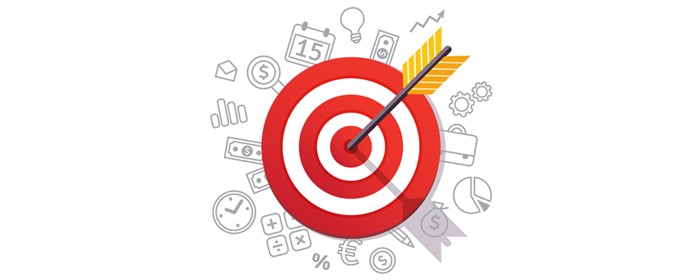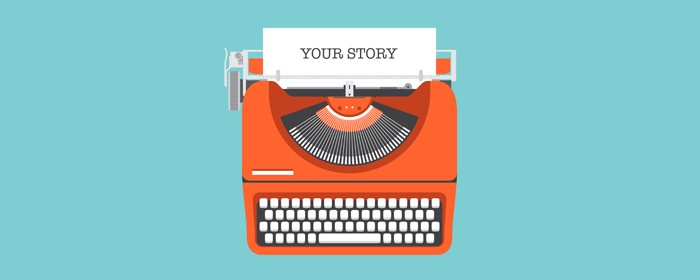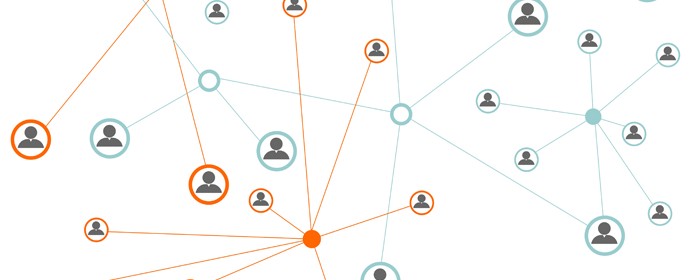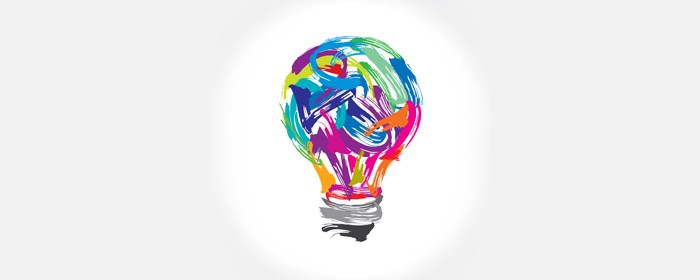By Kyle Prinsloo
The web development industry is booming.
This may be advantageous for freelancers, but it also has its negatives.
What negatives?
When it comes to freelancing, you are often competing with other freelance developers who are offering similar services.
According to the US Bureau of Labor Statistics, the web development field is expected to grow by 15% by 2026.
Companies already have the option to hire a freelance web developer in other parts of the world who will do the job for a much lower price.
So, what do you do not to become a commodity and not be so easily replaceable?
The solution is in building your personal brand.
What is a Personal Brand?
Your personal brand portrays to your target audience who you are, what you stand for and what sets you apart from other freelancers.
Another way to think of it would be what you’re known for or what you’d like to be known for.
Why Have a Personal Brand?
Many assume that personal branding is just for expert freelancers.
It’s not.
A personal brand is one of the most critical things to have in this competitive industry.
3 reasons why I say this:
1. You Stand Out From The Crowd
For many freelance web developers, getting new clients is like calling out to them in an overcrowded room where everyone’s talking at the same time.
Building your personal brand positions you in a unique way from others by highlighting your expertise, skills, values and other unique qualities that define you.
2. You Establish Yourself as an Expert
Companies prefer working with someone that’s an expert in a specific field.
It’s important to find your niche and to then establish yourself as an authority that can be trusted.
When you can prove to be an expert in the field, companies wouldn’t mind paying a premium price to consider working with you than with one of your cheaper competitors.
3. You Gain Trust
Clients would often do research before deciding on which web developer to hire.
Branding yourself as a freelance developer recommended by others instantly makes you more credible for prospective clients.
This often leads to more opportunities in the future.
Now that you understand the importance of branding and how it can drastically transform your freelancing business, let’s get into the meat.
Here are 10 actionable tips to brand yourself as a freelance developer:
Know Your Ideal Client
Develop a Unique Selling Proposition
Revisit Your Why
Share Your Story
Start Blogging
Create an Online Portfolio
Build the Right Connections
Leverage Social Media
Ask for Testimonials
Be Yourself
Let’s get into each of these in more detail.
1. Know Your Ideal Client
Knowing your ideal client is essential. It will guide you in aligning your personal brand so you become relatable and appealing to your target audience.
One way to do this is to create a buyer persona. This persona is a semi-fictional representation of your ideal client. It is based on thorough market research and educated assumptions.
Most freelancers would do this by analyzing personal demographics like age, gender, income, business size, and industry. That’s a good start, but to build a strong personal brand, you’ll need to go deeper than that.
Here are some questions to ask about your ideal client/niche:
What are their most significant challenges?
As a freelance web developer, your goal is to provide a solution for your ideal client. Knowing their challenges will guide you on what skills and expertise to highlight in your personal brand.
What are their goals?
In addition to generating revenue, find out what are the core values and principles that motivate and drive your ideal client.
Where do they get information?
The only way that your ideal client will find you is if you build a strong brand presence in the places where they go when they need answers to their problems. Do they do a search on Google? Or would they search for answers in a specific social media channel? You need to be there to offer the solution they are looking for.
What blogs and publications have they subscribed to?
These would give you more insight on what type of personality resonates with your ideal client the most. For example, if your ideal client follows the likes of Neil Patel, it’s likely that your ideal client prefers someone that’s detail-oriented.
This gives you get a better idea of what type of personality your ideal client is looking for in a freelance web developer. At the same time, you learn who you should build connections with.
A quicker way to do this is by using a tool like HubSpot’s persona generator. It gives you a list of questions to answer to help you create your freelance business buyer persona.
2. Develop a Unique Selling Proposition
A unique selling proposition (USP) is the one thing that you can offer to your clients to help you stand out. It answers one specific challenge faced by your client that you can solve exceptionally well.
Here are the steps on how to create your own unique proposal:
1. Know What Your Client Wants
Clients can often be vague about what that they want to achieve. So you might have to dig a little deeper to know precisely what their main problem is that they want to be solved or what goal they want to accomplish.
2. Provide Solutions
Your clients aren’t paying for your services. THEY PAY FOR THE SOLUTION.
You need to clearly present to them how your services and expertise can help them accomplish that.
Highlight things like:
How much their sales can potentially increase
How soon can they start expecting results
How their business’ brand might improve
How many clients they can potentially have
3. Make Your Services Indispensable
You need to be confident in your skills and what you are offering. It is important to convince your potential client that you are an expert and how you can make a difference in their business.
Do not be like every other freelancer out there who just sees a project as another project. Take time to research the business, its goals, and values.
Make them aware of how your services can help them get there and how you are different from your competitors.
There are many ways on how you can prepare your personalized USP.
You can use the elevator speech formula which forces you to explain your USP within 30 seconds or less. This is crucial because studies now show you only have a few seconds to grab the attention of your target audience.
The elevator speech starts off with this one-sentence formula:
Your Offered Solution + Your Target Market + The Value You Provide
For example, here’s my USP for this website:
“I help developers become successful freelancers and create effective websites.”
My offered solution is to help launch and grow a freelance business. My target audience is developers. The value I provide is for them to freelance full-time and experience more freedom.
Taking this further for your ideal client, you might say:
“I help doctors get more patients through effective websites and online marketing.”
3. Revisit Your Why
Remembering why you decided to become a freelance web developer is powerful in building your personal brand. It gives you a broader purpose than just making money. It fuels your passion for what you do and it keeps you motivated and focused
More importantly, it’s your “why” that will help you connect with your potential clients and set you apart from the rest.
Simon Sinek said: “People don’t buy what you do. They buy why you do it.”
Here are some questions to ask yourself:
What are the goals you want to achieve as a freelance web developer?
What made you choose freelance web development?
Why are you doing this? For freedom? For money? What is it?
4. Share Your Story
This is probably the most challenging because it means you’ll need to become transparent, honest and vulnerable.
At the same time, I will say that it’s not a requirement to do, but it can be beneficial in some cases.
Humans relate with stories, especially those that are similar to what we might be experiencing.
Telling your story also helps you show your personality to your target audience and you connect with them on a deeper level.
When writing your story, don’t just focus on your successes, milestones and achievements. Be willing to share your struggles, challenges and failures.
The more real you present yourself, the more your target audience will be ready to trust you enough to start building a relationship.
5. Start Blogging
One effective way to quickly build your personal brand as a web developer is by starting a blog.
It not only provides an avenue to share your knowledge and advice, but it also establishes you as an expert or an authority in the eyes of your target audience.
If you create consistent and valuable articles, you will eventually become the go-to person for their questions and needs.
Make sure your blog posts are logical, structured well, straight-to-the-point and easy-to-read.
If you’re new to blogging, you can get started here.
6. Create an Online Portfolio
To establish your brand, it is vital to have a portfolio website that displays your expertise.
An online portfolio is where you can bring in potential clients so that they can learn more about you, what you’ve done and how you can help them.
Here are the things to include in your online portfolio:
A Recognizable Domain Name
Since you are your personal brand, it is recommended to use your name in your domain if possible. Otherwise, a company name is also fine.
A Professional Website
First impressions count. Use a website design that doesn’t just look good, but is also easy to navigate. I like coding this from scratch, but another good alternative is a tool called Divi. Also, don’t forget about how the impact colors have on perception.
Add a Logo
Your logo should be more than a fancy symbol that communicates nothing. It should be a visual representation of who you are, what you do and your values.
Display Your Previous Work
Clients want to see proof of your previous work. This means you need to include a portfolio of your previous successful projects which will help you gain trust and credibility.
Personalize It
People connect quicker with you when they can see you. No one likes to do business with someone they can’t see.
Focus on the End Goal
It is fine to include the programming languages and tools you specialize in, but make sure not to let this become the main focus of your website.
Most clients don’t care about the programming languages or frameworks you know or how well you know it. All they want to know is if what you know will result in growing their business.
Link Your GitHub and CodePen Accounts
Having these links will help boost your credibility amongst potential clients as it showcases your knowledge and expertise among the community.
Call-to-Action
Don’t assume that your potential clients know what the next step is that you want them to take.
Adding the right call-to-actions in different areas of your website can give visitors that needed push to become a client.
Contact Form
I know this sounds so obvious, but it’s amazing how people overlook the basics of a clear email address to contact or a simple contact form.
7. Build the Right Connections
A study done by Nielsen shows that 82% of people are more likely to consider product and service recommendations from people who they trust.
That’s why it’s important to make sure you connect and build relationships with the right people.
One way to do this is by attending local business meetups in your area.
These are great places to introduce yourself as a web developer/marketing consultant to the local business community. It can open up doors of opportunity for client work in the future.
Industry conferences and events where your ideal clients are should also not be neglected.
8. Leverage Social Media
On average, a person spends two hours daily on social media.
Being active on the social media platforms where your ideal clients are increases the chance of them finding you.
That said, make sure that the bulk of your posts here provide value to those in your network. A study published by Bop Design shows that 80% of customers evaluated how they would perceive a brand based on their social media accounts.
Look for relevant groups that you can join where you can share your expertise with others. This will get the attention of potential clients who will eventually reach out to you outside of the group.
9. Ask for Testimonials
Despite the different kinds of marketing strategies out there, nothing beats the power of word-of-mouth advertising.
You can leverage this when building your personal brand by including testimonials from previous clients on your online portfolio.
You need to take the initiative to ask your current and previous clients.
Sending a short email to your clients immediately after completing the project is the easiest way to do this.
All you need to do is ask them: “Would you be happy to provide me with a short testimonial of how you found working with me?”
The more, the better. So try to get at least 3–6 testimonials.
10. Be Yourself
Remember that you are your personal brand.
Don’t be afraid to let your personality show. It’s who you are and what makes you unique.
Be true to yourself, don’t be fake and keep improving your knowledge, how you deal with clients and just general growth in all areas of your life.
Branding yourself as a freelance developer takes time and effort. Start right and more importantly; finish right.
Start establishing yourself as an expert in what you do and not a commodity.
The results will soon follow.
Thanks for reading and I hope this article has helped you :)
Let me know in the comments if you have any questions.
If you’re interested in more freelancing related articles, check out my blog StudyWebDevelopment.com or follow me on Twitter :)













